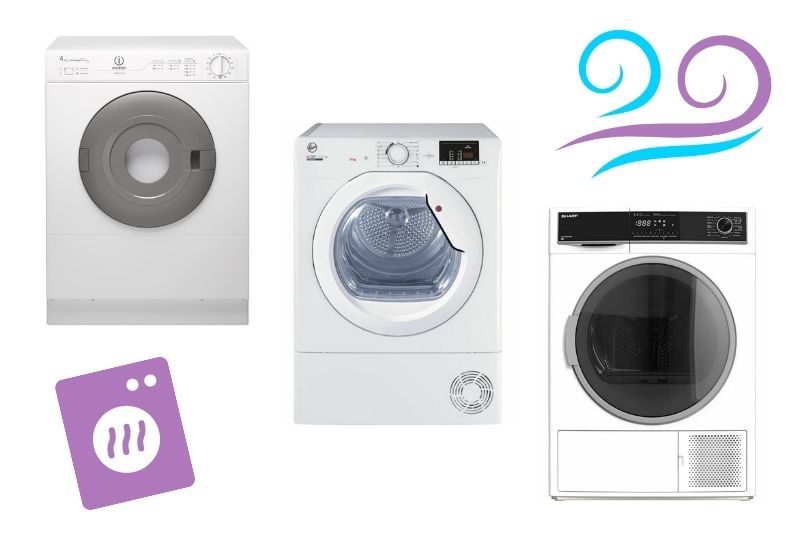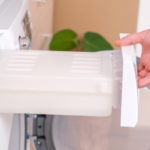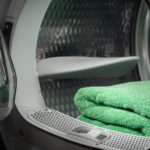Electric tumble dryers have come a long way since their inception in the 1930s. In the past, you’d be guaranteed to get a vented tumble dryer, but now you have the choice between vented, condenser, and heat pump dryers!
Tumble dryers come in three forms: vented, condenser, and heat pump.
Vented tumble dryers use a hose to pump moisture outside, and condenser dryers gather moisture in a tank. Heat pump tumble dryers are like condenser dryers, but they recycle heated air within the dryer, making them more eco-friendly.
All these terms tumbling around your head can be confusing, so I’ll explain each type of tumble dryer in more detail. I’ll also compare the three dryer types, helping you decide which is best for you – if any!
Vented Tumble Dryers
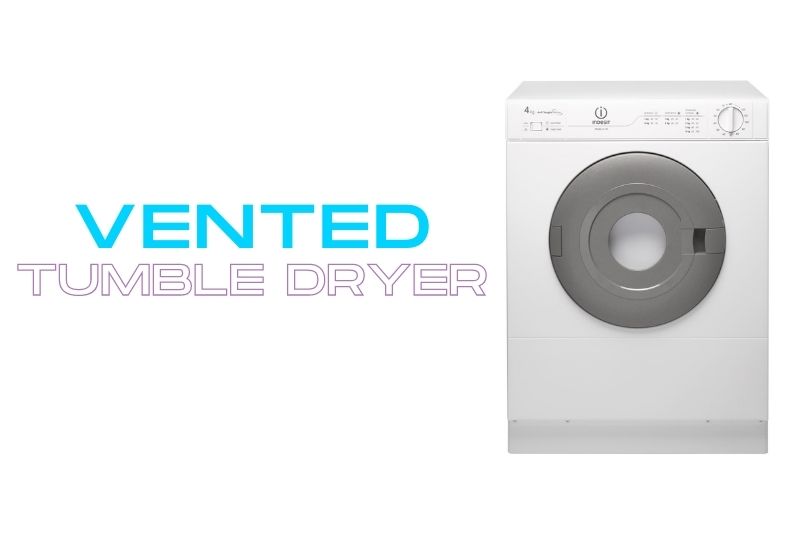
They’re the original, and some might say they’re still the best.
Vented tumble dryers use an airing tube to vent out the steam they produce while drying. The steam needs to be sent outside, meaning that you’ll need to either get the hose installed in your wall, or position it at an open door or window.
Failing to vent the steam outside will almost certainly lead to patches of mould and damp inside your home—it’s not optional!
Vented dryers are typically the cheaper option to buy upfront (typically available for under £200) but they’re less energy efficient than heat pump dryers. This means that they may drain your bank account more over time, depending on how heavily you use them.
Who should buy a vented dryer?
I’d recommend a vented tumble dryer to someone who doesn’t heavily rely on tumble drying their clothes, since vented dryers are typically smaller and their cycles take longer than condenser dryers. This makes vented dryers perfect for single or two-person households.
A vented dryer is also a good option for technophobes or older people who aren’t interested in having a dryer come with WiFi compatibility and a billion different settings. Most vented dryers have simple interfaces, with a few buttons and dials to get the job done.
Those on a budget will be able to purchase a reliable vented dryer for less than £200.
Condenser Tumble Dryers

These days, you’re more likely to be sold a condenser or heat pump dryer.
Condenser dryers don’t expel the steam they produce while drying. Instead, these dryers collect the moisture from cooled steam in a tank that you’ll need to empty regularly.
This means that condenser dryers are more mobile than vented dryers, although they’ll need to be kept in an airy room with lots of space to avoid damp patches caused by any escaped steam.
Condenser dryers tend to come with more bells and whistles, and some have WiFi and Bluetooth compatibility allowing it to be controlled remotely through an app.
Who should buy a condenser dryer?
Condenser dryers are mid-range for both price and energy efficiency. This makes them suited to a household that uses their dryer at least more than once a week, like a family of four.
These dryers are also mid-range in terms of tech, with most models offering a range of drying levels and settings, alongside a touch screen interface and various sensors. Some might even come with app compatibility, letting you control them remotely.
If you’re looking for a mid-range dryer with convenient features that can dry a range of fabrics, a condenser dryer might be your pick.
Heat Pump Tumble Dryers
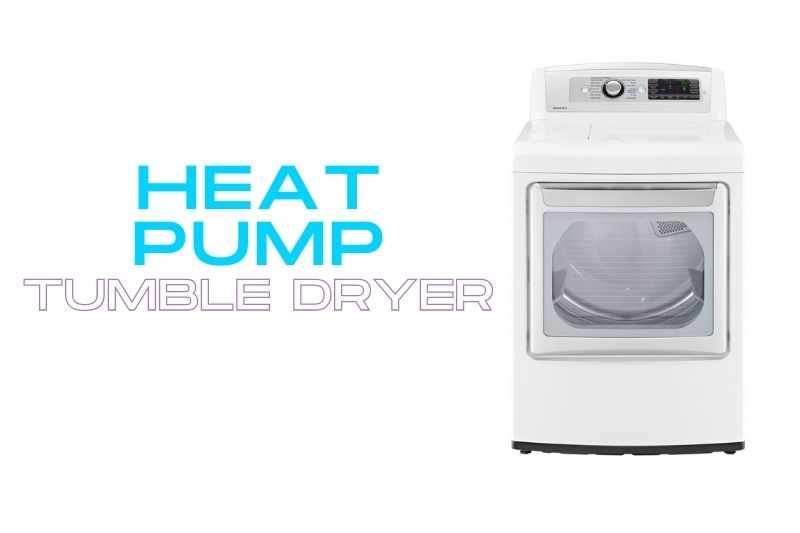
Heat pump tumble dryers are the most recent addition to the tumble dryer compendium.
Heat pump dryers are a more energy efficient version of condenser dryers. These tumble dryers circulate hot air within the drum, re-using heat instead of wasting energy to create more. This means that your energy bill will shrink but your clothes won’t since they’re dried at a lower temperature.
This type of dryer is freestanding and its water reservoir will need to be emptied regularly.
Essentially, a heat pump dryer is an eco-friendly condenser dryer that takes a bit longer to dry your clothes since it’s conserving energy.
Who should buy a heat pump dryer?
Heat pump dryers tend to come in sleek models with high-tech features, and they’ve got the price to match.
These machines are for those with a bigger upfront budget who regularly rely on their tumble dryer and want to lower their energy bill.
Technophiles will love the seemingly limitless features of heat pump dryers, and those who care about the environment will enjoy this eco-friendly drying option.
Vented vs. Condenser vs. Heat Pump Dryers
If you’re still trying to decide which type of tumble dryer to buy, allow me to crown a winner in several important categories, such as energy efficiency, advanced technology, and upfront cost.
This is just a guide, however, since you can find exceptions to the rule within each category, depending on the brand and model of dryer you choose.
Energy efficiency
Heat pump dryers massively outperform the two other dryer types when it comes to energy efficiency.
Vented tumble dryers are in the middle, using about a fifth less energy than condenser dryers.
Upfront cost
Vented dryers are the winner in this category, with cheap and cheerful models available to buy for less than £200.
Next come condenser dryers, which are mid-range in price and are typically priced between £300-£500.
Heat pump dryers can be as much as £800, but tumble dryer pricing of any type depends on the brand and retailer. You can still find budget heat pump options, like this Sharp heat pump dryer.
Advanced technology
Heat pump dryers have the others beat when it comes to high-tech features. For example, this Samsung dryer will suggest your favourite drying cycles based on your habits, and you can start one of its 14 drying programs remotely using your phone.
Condenser dryers are usually available with similar high-tech features too, but it’s more of a given with heat pump models.
Vented dryers veer towards being basic, typically being controlled with a dial and a couple of buttons. You can find exceptions, though, like this vented Hoover model with app compatibility.
Drying time
Condenser dryers will speed through your laundry, making them handy for those with a quick laundry turnover.
Vented dryers also do a speedy job of drying your clothes, coming second to condenser dryers.
Heat pump dryers are the slowest dryer type, taking their time to recycle hot air. However, this drawback is sweetened by reduced energy costs and clothes which are less likely to come out damaged.
Conclusion
Vented tumble dryers are the classic dryer model, gradually being phased out by condenser and heat pump dryers.
Vented dryers use a vent tube to expel steam, so you’ll need to feed their tube through a window or door or have a vent plumbed into the wall. These dryers are cheaper upfront, typically with basic controls, an average drying speed, and mid-range energy efficiency.
Condenser models are more widespread, offering increased mobility since they’re freestanding.
Condenser dryers collect the moisture from your wet clothes in a water reservoir – you’ll need to empty this often.
These dryers are mid-range in terms of price and technology, but they tend to use more energy than the other models. Their higher energy usage also means that they’re the quickest at drying your loads, though.
Heat pump tumble dryers are a newer eco-friendly type of condenser dryer that tend to come with fancier features at a higher upfront cost.
Heat pump dryers recycle hot air inside the drum at a lower temperature than other dryers, saving energy and treating your clothes more delicately. This dryer can save your energy bills and your clothes, but it’ll take longer to complete a cycle.

A recent uni graduate who likes writing, gaming, and drawing. I’m figuring out housekeeping tips alongside you while trying to provide eco-friendly cleaning options. Let’s find out how to use a tumble dryer together!
